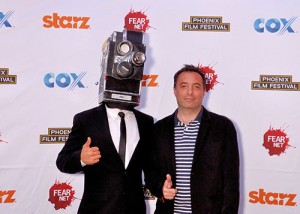
Dom Hemingway is now playing at Harkins Camelview. Michael Clawson spoke with the director, Richard Shepard, while he was here for the festival......
Director Richard Shepard has a smile on his face. It’s not quite beaming, but it’s close.
He’s just walked out of the Arizona premiere of his new movie, Dom Hemingway, which screened earlier this month at the Phoenix Film Festival. He introduced the movie, the lights went out, the film started and he left — he’s seen it before. When I start chatting with him, the movie’s been playing about 30 minutes, which means the audience has endured the film’s audacious cold-open with Jude Law spouting poetry about his penis.
“No one has run out yet, so I guess that’s a good thing,” Shepard says.
The film, which opens in Arizona today, is a tale of redemption about Dom Hemingway, an ex-criminal committed to picking up the pieces of his fragmented life after a long stay in prison. He can embrace reform and be the father he should have been a long time ago, or he can go back to his old ways. Much of the movie is about Dom’s old ways, including when he shows up at the home of his former boss, Mr. Fontaine (Demian Bichir), to pick a fight. The film also stars Richard E. Grant as an exasperated sidekick and Emilia Clark (the Khaleesi herself, Daenerys Targaryen in Game of Thrones) as his adult daughter.
Shepard chatted with the Phoenix Film Festival about his raucous new movie. If you haven’t seen the movie, there are some light spoiler alerts. Nothing that will ruin the movie, but plot points are revealed.
Phoenix Film Festival: How was it in there before the screening? The audience going in seemed very pumped.
Richard Shepard: It’s exciting, and a great place to screen a movie. Lovely theater, too. People flock to film festivals because they want to feel like they’re discovering something. They aren’t going to be showing Captain America at a film festival, which is sorta the point — the festivals want you to find something that you otherwise wouldn’t have watched. On another note, it’s interesting watching my movie around the country. This movie pushes some buttons, so there is, right off the top, 30 percent of an audience that won’t handle it. The rest of the audience will, though. They’ll say, “Holy shit I get this.”
PFF: There’s been a lot of discussion about what the movie is versus what it’s not. It is a character drama and it’s not a heist movie.
RS: There is a perception that movies have to follow a formula. Like if you’re going to make a movie about a gangster there has to be a crime in it. I knew I wanted to make a movie where the criminal commits no crime. It was a gamble that I was able to do because it was a smaller budget with a smaller crew. If I was to make a $100-million movie I know that the studio would expect me to show some crimes, or a heist. Dom deosn’t even need crimes, though. He’s such a compelling character that he brings the audience along on his journey and he keeps them guessing. I think people are watching to see if he’s going to shoot his foot off again. That’s a good tension. You don’t need a ton of plot to create that tension.
PFF: Speaking of tension and expectations, at the end of the film Dom goes into the restaurant and confronts the girl who stole his money, and he doesn’t do what I think everyone wants him to do.
RS: What did you think he was going to?
PFF: Demolish the restaurant.
RS: And that’s the joy of that scene, because the movie set up this tough guy and he goes in and shows restraint. I wanted the ending of the movie to have this scene where the audience went “Oh no!” He has a real shot at redemption and then this woman shows up and he has the opportunity to mess it up. One of the reasons I had that scene in the movie, the one where he beats the man in the garage, I wanted to do something very violent and destructive to tell the audience that he could do something violent and destructive again. The tension of that possibility is what drives the movie from Fontaine’s house to the restaurant at the end. You can see that tension on Richard Grant’s face every time we cut to him. He’s saying, “Please, please, Dom, don’t fuck this up.”
PFF: Richard E. grant is the underrated star of the movie.
RS: I just love him. He’s so funny. When we were editing the film I was contemplating doing splitscreen because his reactions were so unbelievably funny that I didn’t want to cut any of them out.
PFF: As the director are you directing people’s expectations?
RS: Yeah, especially in a movie that’s trying to subvert your expectations. Directors are manipulators ... anyone who tells a story is. I mean, just look at the order of a movie: if you start a movie at the end, it’s going to have a different feel than a movie you start at the beginning. We manipulate everything all the time. For me, I don’t even know how a movie’s going to end when I start it, so that’s a dangerous a way of writing, but I just let my characters take me where they want. I also write to not be bored. If I sense things are getting slow or boring I’ll change the story or take it someplace else.
PFF: HBO’s True Detective is a great example of a script that played with expectations. It had painted itself into a corner for the fans who wanted all the plot points to be resolved. But in the end it wasn’t about the case, it was about the detectives.
RS: I know what you mean, that people wanted it to be more plot. I think it was groundbreaking TV. And yeah, the plot was the least interesting thing in it. It was an average episode of Criminal Minds plotwise. It was all characters and atmosphere. I love the characters and the acting so much that it took me in a totally different direction. As a film fan it took me places I hadn’t expected to go.
PFF: Are audiences ready for character-driven storytelling like that, where the plot is secondary to characters? Like True Detective and Dom Hemingway.
RS: True Detective was highly rated and it did really well. So I think HBO is ready for it. As far as my movies, let me say this, and it might sound strange: I make my movies for about seven people. My core group of friends, the people who really understand me, because I can’t tell how audiences are going to feel. There are a million things that critics like and don’t like. I have zero control over that world. So to worry about all of them is insane. So I just make what I like and hope it works. With Dom, he’s asking a lot from an audience. He’s not an easy guy to love, but he begs you to love him. And by the end of the movie you’re cheering him on. So, to answer your question, I think people are interested in less-obvious character pieces. I’m staking this film on it.
PFF: As it opens in other places around the country, the reviews have been polarizing.
RS: Very hot or cold reactions; no middle-of-the-road at all. The bad reviews are brutal, and the good ones are fantastic. In fact, they’re the best reviews I’ve received in my entire career. The polarizing aspect, I think it’s a good thing. I hope that it is intriguing to an audience. I’ll be honest, this movie needs all the help it can get. People need to talk about it and people need to see it based on the recommendations of others. Otherwise this just doesn’t have the legs to do it on its own. Word-of-mouth is important. Now, some critics have been very harsh on Jude Law, and I must ask, “What fucking world are you living in that you don’t like that performance?” He’s just so spectacular and amazing. We shot the movie widescreen and in France and Jude just looks fantastic on the screen. And as he journeys around you realize he’s the best guy in the world to take a journey with because he’s never boring. I hope people discover his performance, because I think he’s wonderful.
PFF: What draws you to criminals?
RS: They’re fun because we live in Starbucks world, where there’s one on every corner. And when you see a little independent coffee shop you want to go there because it’s different. I feel like we need to break the conventional things and criminals, by their nature, break convention. They push themselves on everything, which is why they are such interesting characters. Dom is that way, too. He’s this rude bull-in-a-china-shop kinda guy, but he’s always pushing himself. And movies have always had love affairs with criminals. If I could rob a million dollars I would do it. I think most people would, and then they’d go back to their jobs and houses and families. It’s a thrill they want to experience. Just look at kids. A parent tells a child not to go there, and he goes there anyway. Kids are naturally rebellious. It’s part of their exploration of the world. Criminals are taking that idea to the next level.
PFF: Tell me about the design of the room with the monkey pictures. It had a very unique look to it.
RS: That was a great confluence of people being creative. We had found this chateau in France that was amazing. We wanted to shoot in this one room, but it was just so plain with the white walls. It was a long scene so we had to find something for the walls that would make it pop. The production designer Laurence Dorman had found these Jill Greenberg photographs of monkeys. He held the book up and we were just shocked. These were just so good on so many levels that it was unreal. It was funny and subversive and just such an inspired decision. Jill had never printed her photographs larger than 8-by-11, so we talked her into letting us print them huge. They need to tower over the characters. The actors walked in and it just lifted everyone’s mood.
PFF: I’ve read several interviews about the famous opening scene: it took six takes, it was all scripted … but did you ever have to dial the content down, or was it always that incendiary?
RS: I wanted to push people when I wrote it. I knew I had a great scene. I kept thinking that if I could get enough money scraped together to do the movie, that it would a great opening. I never dialed any of it down. It’s just such a jolt. It was a jolt to everything, even the film crew. It was the first day of the film shoot, and the crew must have been like, “What the hell kind of film am I on?” I think it’s always nice when you direct a movie that doesn’t have the usual plot tropes. The drama comes from Jude’s character being unpredictable.
 The Immigrant
The Immigrant

 Godzilla
Godzilla
 Neighbors
Neighbors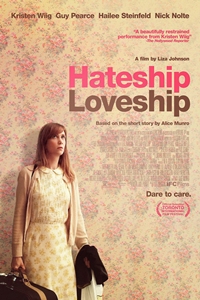
 The Amazing Spider-Man 2
The Amazing Spider-Man 2
 Dom Hemingway
Dom Hemingway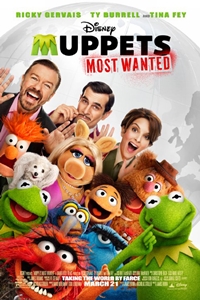 Muppets Most Wanted
Muppets Most Wanted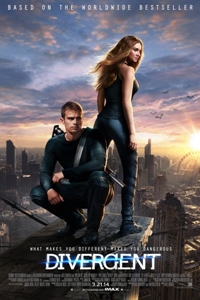 Divergent
Divergent Directed Wes Anderson
Directed Wes Anderson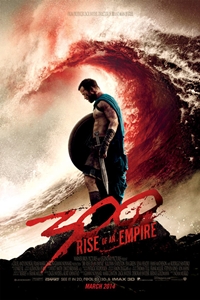
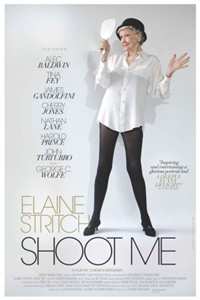 Elaine Stritch: Shoot Me
Directed by Chiemi Karasawa
Elaine Stritch: Shoot Me
Directed by Chiemi Karasawa by Michael Clawson of
by Michael Clawson of  Woodley again after their 2013 film The Spectacular Now. In Divergent, Woodley plays a talented young warrior in a ruined world ruled by competing class-like factions. Teller plays a competitor in the physical and, at times, violent movie.
Woodley again after their 2013 film The Spectacular Now. In Divergent, Woodley plays a talented young warrior in a ruined world ruled by competing class-like factions. Teller plays a competitor in the physical and, at times, violent movie. Courtney said he hadn’t even heard of the book when he was offered his role, one that involved him being especially cruel to Woodley’s character. “Mostly I was a fan of Burger’s work, so I got online and read up about everything. After some digging I knew I wanted to do it. It was all very new to me … young adult novels.”
Courtney said he hadn’t even heard of the book when he was offered his role, one that involved him being especially cruel to Woodley’s character. “Mostly I was a fan of Burger’s work, so I got online and read up about everything. After some digging I knew I wanted to do it. It was all very new to me … young adult novels.”







